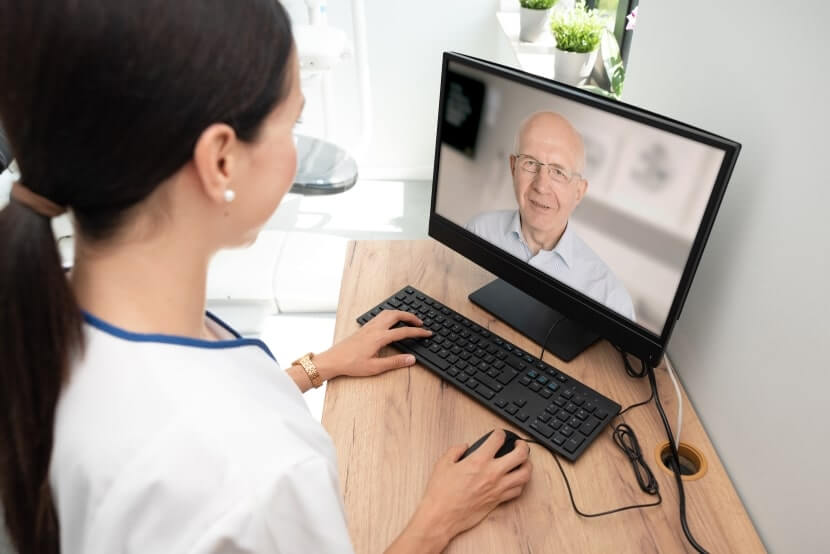Virtual healthcare consultation provides remote health care to parties who cannot see their healthcare provider in person. Virtual healthcare technology is used by hospitals, clinics, and physicians to interact with patients and other providers. Virtual healthcare consultation reduces the time and expense burden on a patient and allows for continuity of care even in high-risk situations.
Virtual Healthcare Matters
Virtual healthcare has many roles in the healthcare world. It allows patients who have time and resource constraints access to healthcare without taking time off work or having to find childcare. It also aids elderly and chronically ill patients with the opportunity for care without having to leave their homes. The COVID-19 pandemic has underlined the importance of remote healthcare in high-risk situations where patients cannot or should not leave their homes.
Specialty practitioners such as physical and occupational therapists can use virtual healthcare technology to observe how patients navigate and take care of themselves in their home. They can watch as patients perform tasks or exercises to advise what improvements can be made.
And with virtual healthcare, patients can authorize a family member who may be across the country to sit in on their virtual visit to help provide information, ask questions, and take notes.
Virtual healthcare consultation doesn’t just reduce the patient burden – it also helps providers reduce patient overhead. Under the Affordable Care Act, nearly 16.5 million previously uninsured Americans have gained health care coverage – which is great for patients but difficult for already overbooked providers. Virtual healthcare services can help providers to minimize waiting room traffic and keep patients ultimately safer and better served.
The Software That Supports Us
Remote care needs a software platform on which to function, which is where virtual healthcare software comes in. Virtual healthcare software provides secure audio and video connections across which remote healthcare visits can occur. Virtual healthcare software connects patients with providers, allowing them to share videos and images and integrate with a patient’s electronic health record and providers’ scheduling systems.
While there are many different virtual healthcare software systems out there, the best ones will always include the following features:
HIPAA-Compliance
Not all video conferencing platforms are secure – and if you’re going to run a remote healthcare call, yours had better be. The Health Insurance Portability and Accountability Act (HIPAA) outlines the required privacy and security standards that any provider must offer when dealing with sensitive patient data. If you want to ensure you’re remaining compliant, it is best to choose purpose-built virtual healthcare software with remote health in mind.
Financial Verification
While remaining compliant, it’s also essential to be financially secure. Virtual healthcare software should allow for secure payments across the platform and include a rules engine that verifies a patient’s payment eligibility at the time of the appointment scheduling (providers need to get paid for every digital visit, too.)
Mobile App
Virtual healthcare software aims to make life easier for patients, allowing them to get care from anywhere. While the prevalence of technology in the home is prolific, there are still many low-income patients who don’t have access to a computer at home. That’s where mobile apps come in. Mobile apps allow patients to access the care platform even from their mobile phone, meaning they can connect from wherever they are without any hassle.
Built-in Support
No matter how easy virtual healthcare software is to use, there will always be questions from one user or another, which is why the best software includes real-time support and in-app issue resolution to ensure the highest quality of service for your patients.
Virtual healthcare technology offers innumerous benefits to medical practices and patients alike. It’s more efficient in terms of resources for all parties involved, increases flexibility in scheduling, and most importantly, aids for better health outcomes as it removes many barriers to care. Having the best virtual healthcare software to support your remote care practice is the first step in creating a high-quality, flexible healthcare system for your digitally connected patients.







